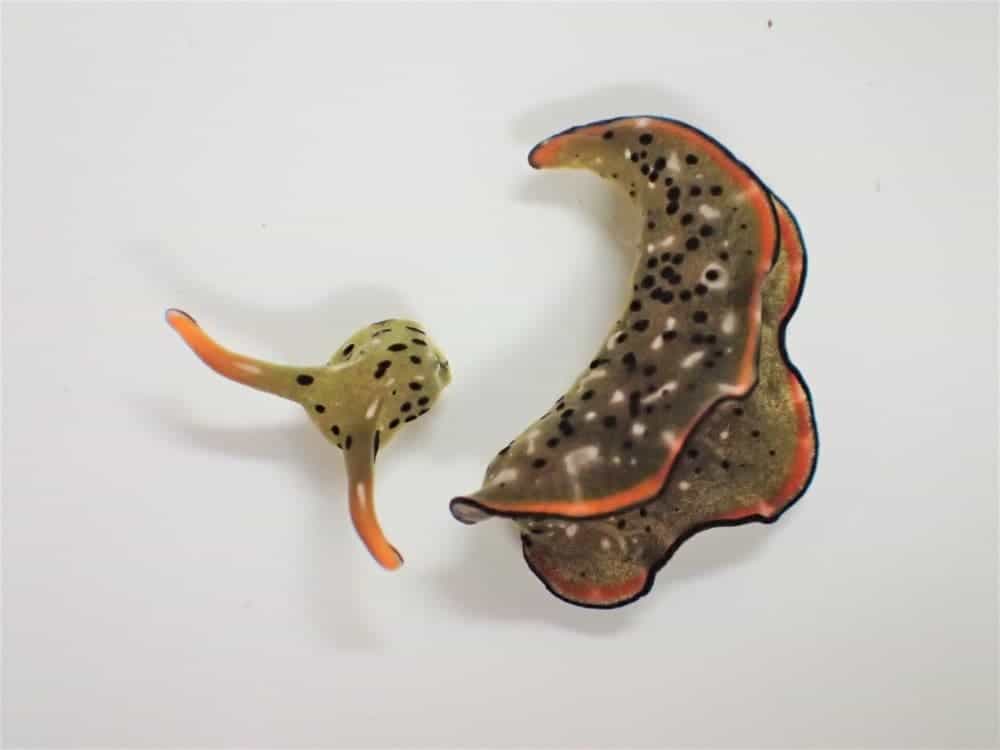
“It was a complete surprise,” says study author Yoichi Yusa. Some sea slugs that were almost all head had been observed in the wild before, but researchers didn’t pay much thought to them. “Such cases have been considered as being attacked by predators and would eventually die,” Yusa adds.
So when Yusa’s research student Sayaka Mitoh found that one of the sea slug heads was moving on its own, it came as a shock . Turns out, not only do they move on their own, but they can regenerate their whole body, heart and organs, from just the head — and it could have something to do with photosynthesis.
Sea slugs were already known to be unique creatures. They have the ability to steal photosynthetic cells called chloroplasts from the algae they consume, a very unusual and poorly understood phenomenon known as kleptoplasty (klepto- as in kleptomaniac). The only animals capable of this are some marine flatworms and sacoglossan sea slugs. For Mitoh, they’re both fascinating and cute.
“When I joined the Yusa lab for my undergraduate thesis four years ago, I was fascinated by sacoglossan sea slugs because of their photosynthetic ability and cute appearance. So I decided to study them,” she tells ZME Science.

Autotomy, the ability to shed off body parts when under threat, is not that uncommon in the animal world. Some lizards famously shed their tail when they feel attacked. Over 200 species of invertebrates are capable of some form of autotomy — but shedding your whole body and starting anew from just the head, that’s a new level. “This is the most extreme case of autotomy as far as we know,” says Yusa.
The discovery came as pure serendipity. Mitoh is a PhD candidate in the lab of Yoichi Yusa, raising sea slugs from eggs to study their biological traits. At one point, she noticed that a sacoglossan sea slug head was moving around after it had been severed from its body. At a closer inspection, researchers found that the head could move on its own immediately after separation.
Wthin hours, some would start to feed on algae. Within days, the wound at the back of the head closed. Within a week, they started to regenerate their heart. After less than a month, regeneration was complete. Two were able to regenerate their body in one week.
How… and why?

Not all sea slugs seem capable of doing it, the researchers note. Older individuals that didn’t feed appeared unable to regenerate. It was always the heads that would develop a new body and not the other way around — although researchers note that the body was also reactive for days and in some cases, even months.
But Mitoh and Yusa aren’t sure how the sea slugs manage it. Mitoh suspects there must be stem-like cells at the end of the neck that are capable of regenerating the body. The sea slugs’ unique ability to obtain nutrients from photosynthesis, even when they cannot digest food, would explain how they get the necessary energy. As to why they do it, researchers also have an idea.
“We think that one of the functions of this autotomy is to eliminate internal parasites,” Yusa explains in an email, adding that this can probably also occur in the wild.
Understanding how this process happens could help researchers unlock valuable secrets of both regenerative biology and photosynthesis by animals — both of which are fascinating fields that can become very valuable for humans. Yusa notes that while some animals have remarkable regenerative abilities (like hydras or starfish), this usually comes in the form of asexual division. Nothing like these slugs has been reported before.
Yusa also adds that none of this would have been possible without Mitoh’s curiosity and passion for sea slugs.
“Please be aware that only people who rear the sea slugs and observe them carefully can find this phenomenon. Sayaka Mitoh is such a person. She loves sea slugs very much,” Yusa notes. This passion is easy to see in Mitoh:
“After a lot of hard work, I could build up their culturing system from eggs to adults. They are “my children”, so I feel them special,” she concludes.
The study has been published in the journal Cell.


